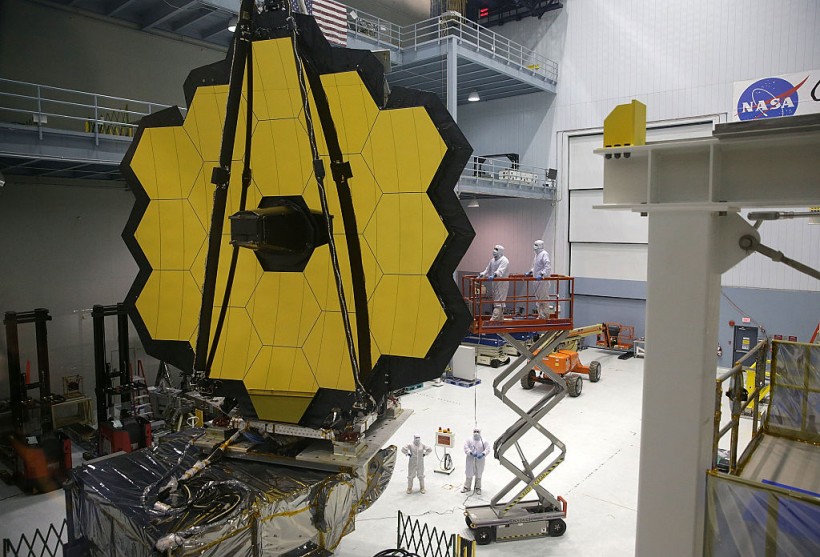The James Webb Space Telescope (JWST or Webb) is on the road to launch on Tuesday, December 21, but the bad weather did not permit this historical event. As soon as the weather cooperates, NASA's much-awaited next-generation space telescope will be ready to launch to space to launch.
The giant space telescope was a collaboration of three space agencies - NASA, European Space Agency (ESA), and the Canadian Space Agency (CSA). It will serve as NASA's new flagship astrophysics mission that will replace the Hubble Space Telescope that served for more than 30 years.

Engineers and technicians assemble the James Webb Space Telescope on November 2, 2016, at NASA's Goddard Space Flight Center in Greenbelt, Maryland. The telescope, designed to be a large space-based observatory optimized for infrared wavelengths, will be the successor to the Hubble Space Telescope and the Spitzer Space Telescope.
James Webb Space Telescope Launch Scheduled on Christmas Day
NASA has been developing the James Webb Space Telescope for decades and a few days ago, project officials announced that the observatory is ready to launch, Space.com reported. However, the long-delayed launch is again postponed due to bad weather and will instead launch on early Christmas Day, December 25.
European launch provider Arianespace vice president Jérôme Rives said that high-altitude winds at the Guiana Space Center launch site in Kourou, French Guiana is responsible for the delay. They are set to conduct a new weather assessment on Wednesday, December 22, to confirm the new launch date.
When the new space telescope gets past its problem with the weather, it will begin its month-long journey that covers 1 million miles (1.6 million kilometers). Scientists anticipate all the possible views on the cosmos that the telescope will cover for the years to come.
It will be blasted off Earth aboard an Ariane 5 rocket by Arianespace on December 25 at 7:20 AM EST (1220GMT) but the Live NASA coverage will begin at 6 AM EST (1100GMT) on NASA TV. If this schedule is again thrown off by bad weather, the next schedule will be at the end of the year.
But project officials, such as Weeb program director Greg Robinson of NASA, said they are not stressed about the launch and could even sleep through the night without worries. For now, they are looking forward to the upcoming launch.
They said that the launch is only the first step to begin a month-long process of unfolding the intricate observatory out to L2, the opposite side of Earth as the Sun. It involves approximately 300 steps for the telescope to work.
ALSO READ: James Webb Space Telescope: NASA Observatory Will Show Us How Galaxies Are Formed
James Webb Space Telescope's Mission
Part of the giant observatory's mission is to answer questions about the Solar System, study exoplanets, and look deeper into the universe that humans could have never imagined. According to CNN, the Webb will peer into the atmospheres of exoplanets that could potentially host life. and also to continue the search for life in space outside Earth.
The Webb has a massive mirror measuring 21 feet and 4 inches (6.5 meters), which includes 18 hexagonal gold-coated segments that are 4.3 feet (1.32 meters) each in diameter, which will help it collect more light from the cosmic objects it will be observed in space. The more light it collects, the more details they can observe.
The team took inspiration from the Japanese art origami to fit it inside a rocket since it is extremely large. It was designed with moving and folding parts to fit inside a 16-foot (5-meter) space for launch. Through JWST, scientists hope to see hidden regions of space that have never been discovered before.
RELATED ARTICLE: NASA James Webb Telescope Just Got Fueled; Set to Launch 3 Days Before Christmas
Check out more news and information on James Webb Space Telescope in Science Times.














